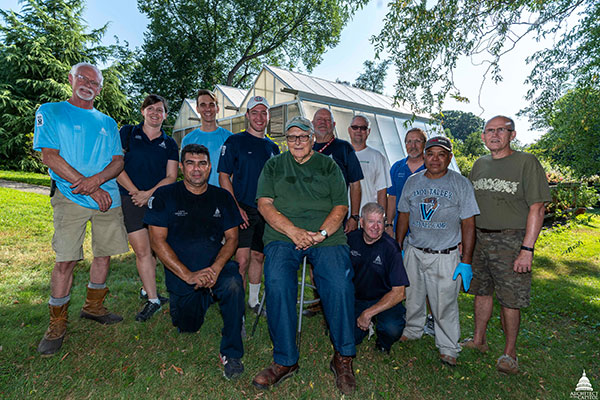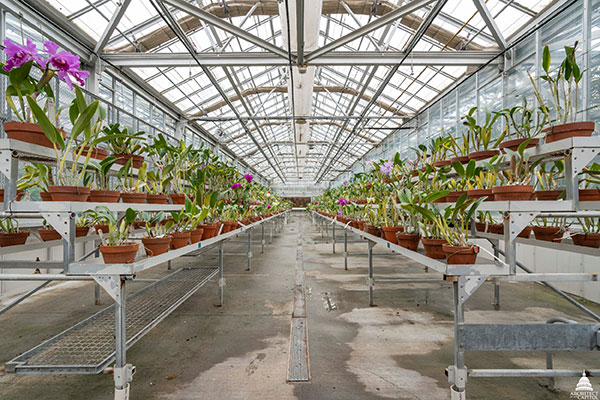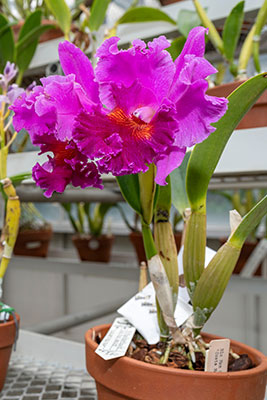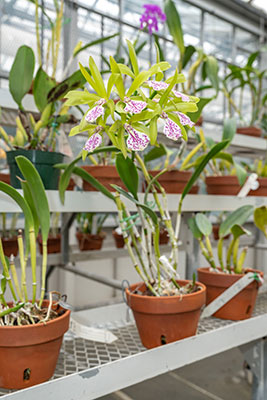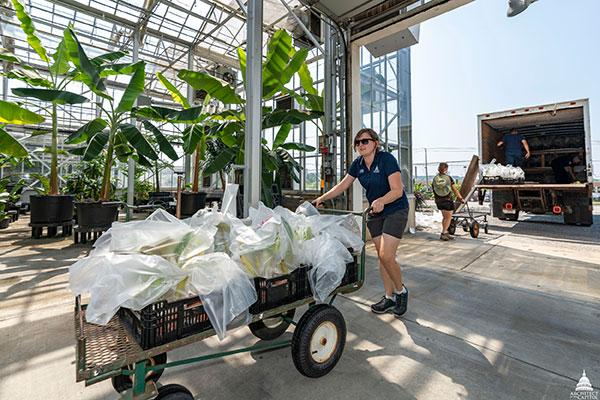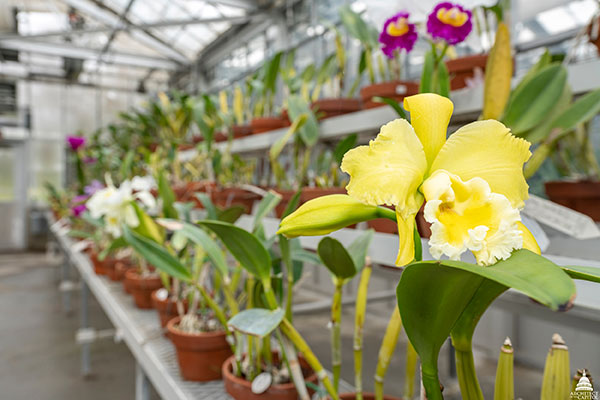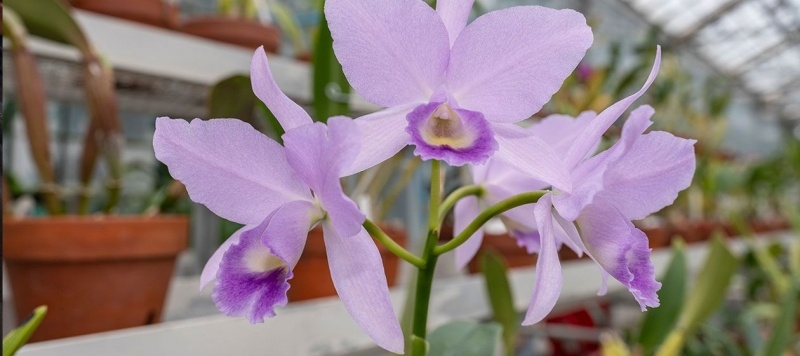 AUGUST 06, 2019
AUGUST 06, 2019
What would you do if a friend said they wanted to give you an orchid? What if they wanted to give you a coveted collection of 600 orchids that had grown over half a century? If you're the U.S. Botanic Garden (USBG), you ask for the documentation, collection inventory and once it looks like a good fit you start making space!
The USBG's collection of orchids was already nationally noted, with more than 3,000 specimens. They range from temperate to tropical varieties, hail from here in North America to around the world in Asia and Africa, and include some that grow in bogs and others that grow high in the treetops without roots in soil. This donated collection — the second largest single donation in USBG history — adds to the rich heritage and importance of the USBG's orchid collection.
The donation came from orchid grower Joe Francis, who lives in northern Virginia. USBG volunteer Mike Bechtold helps tend the orchid collection there. He also knew that Joe might be interested in donating his large collection to an institution that could care for it and share it with the public.
Joe Francis (seated) with USBG employees and helpers on moving day.
"Joe has a stellar reputation for growing plants in a manner that is free of viruses," said Bill McLaughlin, USBG curator of plants. "This was an important component in our consideration of this donation, as viruses are one of the biggest problems with growing orchids in cultivation. Joe was an early adopter of orchid virus testing. As soon as test kits were made available for the two major viruses, he tested his collections on a large scale."
An initial visit to Joe's greenhouses in June 2017 confirmed the quality and virus-free status of the potential orchid donation. The USBG is completing a multiple-year process of testing and cleaning up its own orchid collection, so bringing in a new, virus-free collection was a perfect match.
"I chose to offer my collection to the U.S. Botanic Garden because they were serious about developing a clean collection," said Joe Francis. "I knew that this would give them a leg up in peopling their nascent collection, and as a real bonus these will remain at hand for many future generations of our citizens to learn from and to enjoy."
The orchids in this donation are mostly hybrids developed in the 1950s up through the 1980s, the majority of which are large Cattleya orchids.
Rhyncolaeliocattleya Tampico stands proud among the many donated "corsage type" Cattleyas blooming at the USBG in spring 2019.
"There is an educational aspect to this group of hybrids," McLaughlin said. "They represent important American breeding lines during a burgeoning demand for orchids in the corsage industry. Corsages originally started with species orchids, but the industry began to demand year-round production, larger orchids and a greater color range. Hybridizers went to work, and the results were more vigorous plants, with larger and more spectacular blooms."
Many of the donated orchids received awards from the American Orchid Society, which denotes their floral quality. Many modern Cattleyas are compact and don't need to have their flowers staked. The orchids from the Joe Francis collection were developed to produce cut flowers.
"You need to stake up the flowers because they are huge — 7 to 8 inches across,” said McLaughlin. "They are really over-the-top horticultural plants, beautiful and unique. While today's orchid hybrids are bred for small hobby greenhouses or windowsills, these older lines were aimed at floral production in expansive commercial greenhouses. We can give them the expert care and extra space they need and share them with the public."
The Brassocattleya binosa, bred in 1950, has become a very important parent to many later hybrids. USBG gardener Paula Waltz hauls a cartload of orchids into the Production Facility, each individually wrapped to prevent possible disease transmission.
After the orchids were transported to the USBG's Production Facility in southwest Washington, D.C., they were quarantined for three months. Space in greenhouses away from the USBG's orchid collection was created for keeping them separated during this process. Additional benches were erected to keep them off the ground and prevent water splash up, which could spread disease. USBG Plant Health Care Specialist Jim Willmott monitored the orchids, checking them throughout this period for pests and diseases.
They've been kept together as a group as the USBG plant records team researches each plant, updates names, hand enters each plant into a plant database, and creates a display label. It's a multimonth process that the Garden has just wrapped up.
Orchid nomenclature has been in flux due to continuing emergence of new phylogenetic information (evolutionary histories reconstructed using DNA sequence data, not just structural information). This sort of review and naming update is something a botanic garden has to do on an ongoing basis. The names of 50 percent or more of the donated orchids have been updated.
The butter yellow flowers of Rhyncattleanthe Abbeville 'Golden Promise' represent the more modern breeding among the Francis collection.
Some of the new orchids have already gone up to the USBG Conservatory's Orchids house for display there, while others have been displayed in the recent "Orchids: Amazing Adaptations" joint exhibit with Smithsonian Gardens.
Going forward, the team is photographing each plant as it comes into bloom to add to the database as well as to verify that each plant is indeed properly labeled. The USBG's plant records team is currently hand-inventorying the entire orchid collection with the goal of getting the collection nationally certified.
Make sure to stop by the Orchids house over the coming months as these new orchids join the Garden's display. With their large and colorful blooms, they are sure to be a treat to see.
